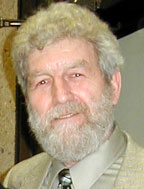 |
Rural Prisons Are Economic Bust By Chuck Armsbury, Senior Editor, The Razor Wire
Comes now prison expansion to bail out impoverished rural communities. And what a bailout it is. Large construction projects, like prisons, are expensive to build no matter how frugal the design. Whether it's a private or public prison, building these fenced communities means millions of startup dollars coming in for local retailers, construction companies and trade unions. As reported by Newsday (NY) on April 10, 2000, this is what village officials in Malone, New York had in mind in the 1980s as the drug war heated up and began filling up the existing prison space quickly. Malone is reportedly a beautiful, 19th Century New England-like town about fifteen miles south of the New York/Quebec border. The town is dissected by the trout-filled Salmon River, and would be more appropriately a setting for a campus than a prison. But this is how our society is nowadays: building more prisons than colleges in most states. Since small communities near New York City didn't want prisons, and since Malone is more than 300 miles from The City, village officials were sure they could lure prisons to their needy town. Malone officials wooed businesses, lobbied the State and won a big prize. The Franklin Correctional Facility now has nearly 3,000 prisoners. Two years later, along came Bare Hill Correctional Facility with almost 2,000 people behind those bars. Malone was lovin' it! Bring on more bodies. So, New York State obliged and last summer the Upstate Correctional Facility opened and now houses 1,400 prisoners. Today 20% of Malone's population of 20,000 are prisoners. The town is now a champion of multicultural diversity with more than 90% of the combined prison-populations black and Hispanic. The town of Malone is overwhelmingly white. Perhaps there's an 'economic miracle' here since the influx of public money (about $30,000 year/prisoner) means prison guards earn some of the highest pay in Malone. No, there are no miracles here. Not even close. Most of the 750 jobs that the Upstate facilities brought to Malone went to people from outside the town. Seniority rules, according to Boyce Sherwin, director of the Office of Community Development for Malone. A hoped-for food processing plant to serve the prisons hasn't materialized, the expanded sewage treatment plant dumps increased amounts of nitrates into the Salmon River, and there's more traffic congestion. It gets worse. Taxes have gone up, and the payments will be more than $1 million this year. "What Malone got was the state's first max-maxi prison for its most incorrigible prisoners. At Upstate they spend 22 hours a day in lockdown, with two hours of recreation in an outdoor cage. The town doesn't even have a YMCA, and the only form of recreation is the bars," Sherwin told the press. Prisons are surely not the long-term economic answer for desperate rural towns. For Malone the dream turned nightmare. Deploring the prison-construction boom, Sherwin and others now ask if this is the legacy to our children. "Once you have the reputation of a prison town, you won't become a Fortune 500 company town, or an Internet or software company town or even a diverse tourism town," says Ann Ruzow Holland of Friends of the North Country, a community development group that has opposed prison-building upstate. So it goes across the United States. In northeastern Washington State, very near the headquarters for The November Coalition, the lure of 'prison money' for rural communities has snagged the Colville Confederated Tribes. The tribal council has plans underway to build a prison on seventy acres of land in Nespelem, about 90 miles northwest of Spokane. The facility will incarcerate men and women, up to 48 adults and 16 children at a cost of $4.5 million. They need seventy acres for this? What's next, prisoner-operated casinos? Who in past times could foresee the totally-corrupting power of the almighty dollar? Perhaps the Colville members and communities nationwide should heed the lessons of social and environmental failure from Malone's stillborn 'economic miracle'.
|
 Ah,
the countryside. If you live in a large city, you dream of getting
away. Just smell the clean air. Hike around, enjoy nature, and
leave behind the congestion. But it's a little different story
if you actually live in the country. Living out in the woods
on ten acres of land depleted of its soil, trees, jobs or other
natural resources can mean crushing poverty. Life in rural America
can be mean, dire and desperate.
Ah,
the countryside. If you live in a large city, you dream of getting
away. Just smell the clean air. Hike around, enjoy nature, and
leave behind the congestion. But it's a little different story
if you actually live in the country. Living out in the woods
on ten acres of land depleted of its soil, trees, jobs or other
natural resources can mean crushing poverty. Life in rural America
can be mean, dire and desperate.